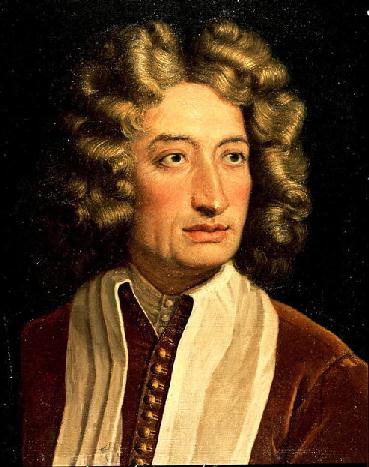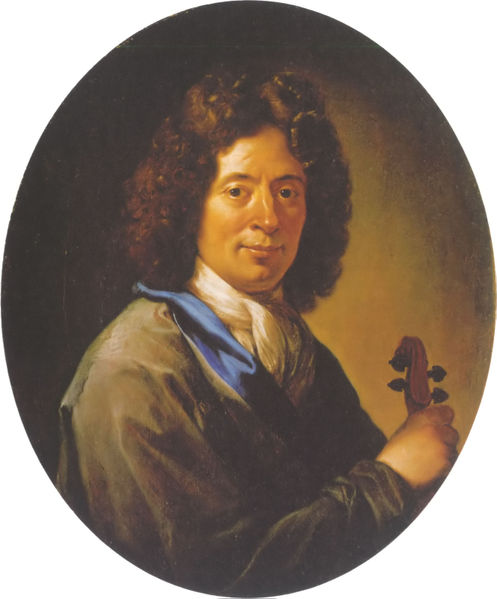<Back to Index>
- Physician René Théophile Hyacinthe Laennec, 1781
- Composer Arcangelo Corelli, 1653
- General Otto Liman von Sanders, 1855
PAGE SPONSOR


Arcangelo Corelli (February 17, 1653 – January 8, 1713) was an Italian violinist and composer of Baroque music.
Corelli was born at Fusignano, in the current day province of Ravenna, although at the time it was in the province of Ferrara. Little is known about his early life. His master on the violin was Giovanni Battista Bassani. Matteo Simonelli, the well known singer of the pope’s chapel, taught him composition.
He gained his first major success in Paris at the age of nineteen, and to this he owed his European reputation. From Paris, Corelli went to Germany. In 1681 he was in the service of the electoral prince of Bavaria; between 1680 and 1685 he spent a considerable time in the house of his friend and fellow violinist - composer Cristiano Farinelli (believed to be the uncle of the celebrated castrato Farinelli).
In 1685 Corelli was in Rome, where he led the festival performances of music for Queen Christina of Sweden, and he was also a favorite of Cardinal Pietro Ottoboni, grand nephew of another Cardinal Pietro Ottoboni, who in 1689 became Pope Alexander VIII. From 1689 to 1690 he was in Modena; the Duke of Modena was generous to him. In 1708 he returned to Rome, living in the palace of Cardinal Ottoboni. His visit to Naples, at the invitation of the king, took place in the same year.
The style of execution introduced by Corelli and preserved by his pupils, such as Francesco Geminiani, Pietro Locatelli,
and many others, was of vital importance for the development of violin
playing. It has been said that the paths of all of the famous
violinist - composers of 18th century Italy led to Arcangelo Corelli who
was their "iconic point of reference." (Toussaint Loviko, in the
program notes to Italian Violin Concertos, Veritas, 2003) However,
Corelli used only a limited portion of his instrument's capabilities.
This may be seen from his writings; the parts for violin very rarely
proceed above D on the highest string, sometimes reaching the E in
fourth position on the highest string. The story has been told and
retold that Corelli refused to play a passage that extended to A in
altissimo in the overture to Handel’s oratorio il Trionfo del Tempo e Disinganno (premiered in Rome, 1708), and felt seriously offended when the composer (32 years his junior) played the note. Nevertheless, his compositions for the instrument mark an epoch in the history of chamber music. His influence was not confined to his own country. Johann Sebastian Bach studied the works of Corelli and based an organ fugue (BWV 579) on Corelli's Opus 3 of 1689. Musical
society in Rome also owed much to Corelli. He was received in the
highest circles of the aristocracy, and for a long time presided at the
celebrated Monday concerts in the palace of Cardinal Ottoboni. Corelli
died in possession of a fortune of 120,000 marks and a valuable
collection of pictures, the only luxury in which he had indulged. He
left both to his benefactor and friend, who generously made over the
money to Corelli's relatives. Corelli is buried in the Pantheon at Rome. One can still trace back many generations of violinists from student to teacher to Corelli (the Corelli school). His
compositions are distinguished by a beautiful flow of melody and by a
mannerly treatment of the accompanying parts, which he is justly said
to have liberated from the strict rules of counterpoint. His concerti grossi have often been popular in Western culture. For example, a portion of the Christmas Concerto, Op.6 No.8, is in the soundtrack of the film Master and Commander: The Far Side of the World. He is also referred to frequently in the novel Captain Corelli's Mandolin.